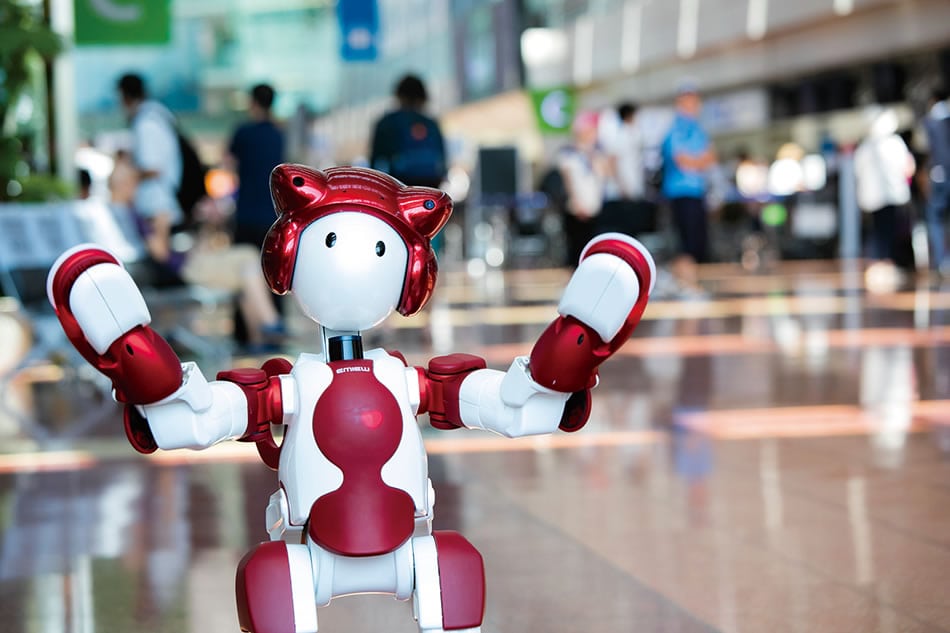Hitachi Takes Airport Robot Artificial Intelligence to the Next Level
Share

APEX Insight: With the ability to interface with both passengers and the airport itself, Hitachi’s EMIEW3 robot is an excellent listener and provider of information. New active-learning AI technology promises to improve the quality of customer service provided by the human symbiotic robot.
Hitachi has developed technology that enables its human symbiotic service robot EMIEW3 to spontaneously learn how to respond to questions that it could not previously answer. Through active-learning dialogue data-based artificial intelligence (AI), EMIEW3 can learn about information that may change frequently, such as flight status, and correctly respond to customer enquiries.
EMIEW3, like Aldebaran’s NAO, is a fully humanoid robot, although it only stands three feet tall. With a cartoon-like helmet and a glowing red heart, EMIEW3 gathers sensory input and operational data from security cameras, all of which is processed in the cloud before being sent back to the robot itself.
The robot’s connectivity gives it the power to find opportunities to assist beyond its own line of sight. While providing service, EMIEW3 can switch languages based on what it hears: The video below shows EMIEW3 greeting a lost passenger in Japanese, and immediately switching to English when the traveler asks, “Where is the tourist information?”
Hitachi’s service robot is also physically self-sufficient – should EMIEW3 fall over, it can stand up on its own. This is a big deal in robotics, as this video by Boston Dynamics shows.
Airports have been designing interiors that can support robot staff, and several trials of robot guides have already been run. Those robots tend not to be humanoid, though, more closely resembling mobile check-in machines with a few nods towards anthropomorphism. A robot resembling the people with whom it interacts, with constant access to ambient information about not only where and when planes are landing, but also when travelers in the area seem lost, is a game-changer. EMIEW3 is not just a standalone robot, but a physical extension of the airport itself.
Hitachi is not new to the robot game, of course, having innovated in robotics for over half a century, demonstrating a robot with artificial intelligence as early as 1970. EMIEW3 was most recently demonstrated at the Halcyon Dialogue VIP Robotics Showcase in Washington, DC this week, and it just can’t wait to show you to your gate.


